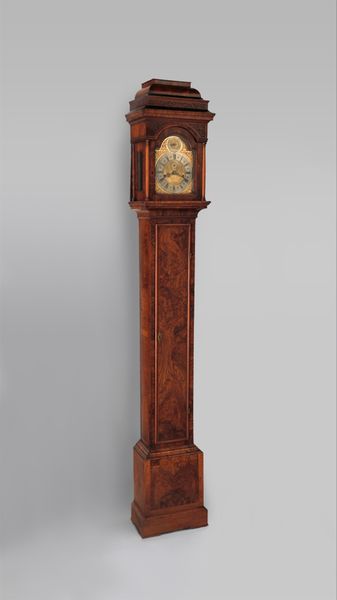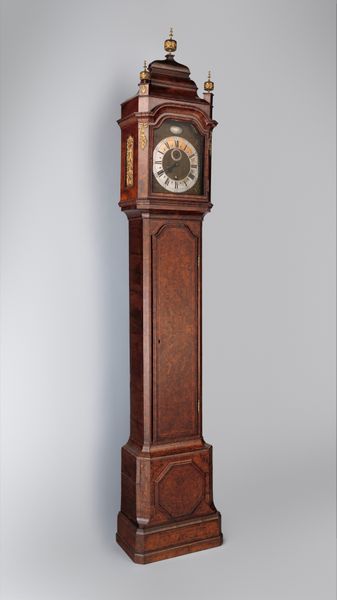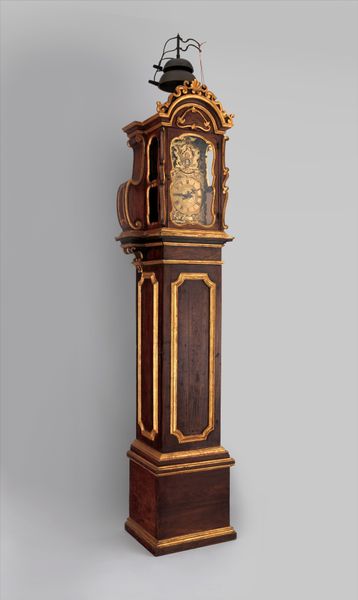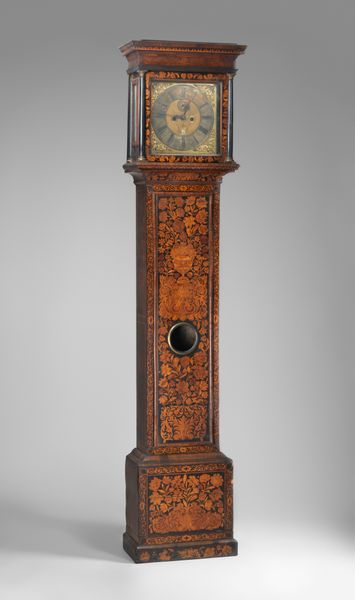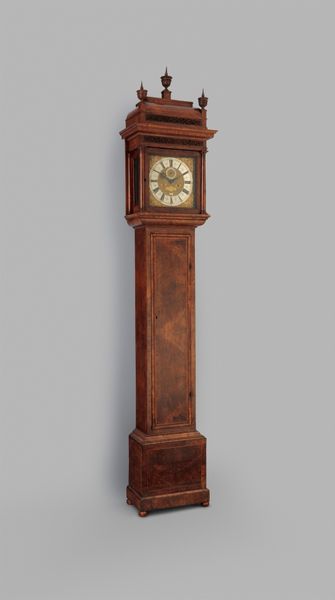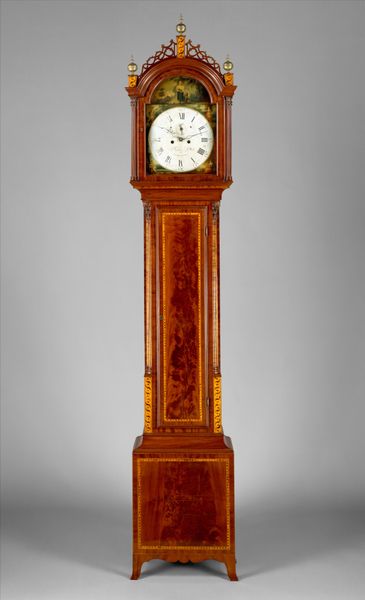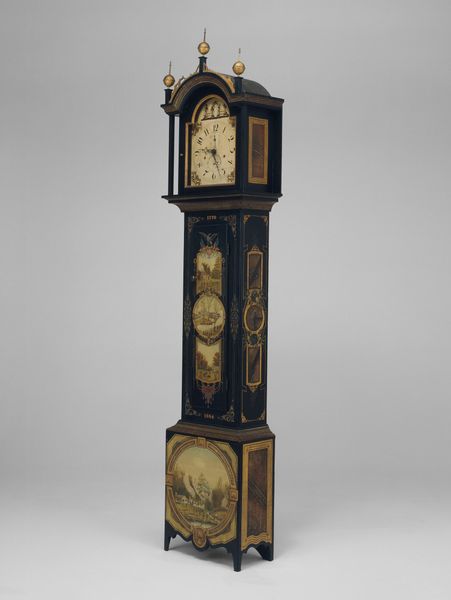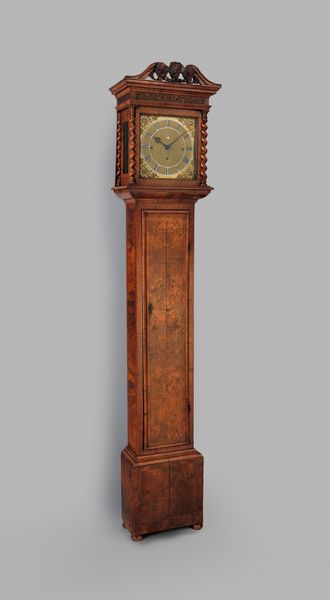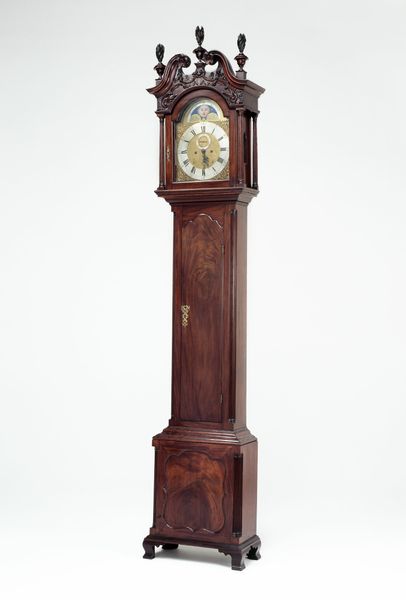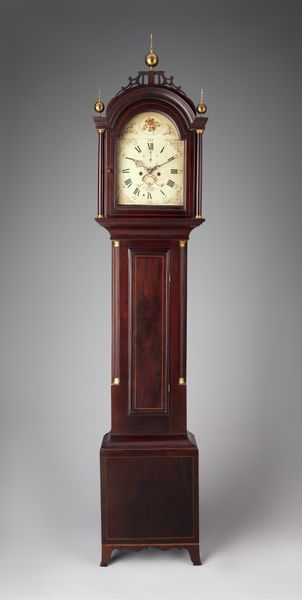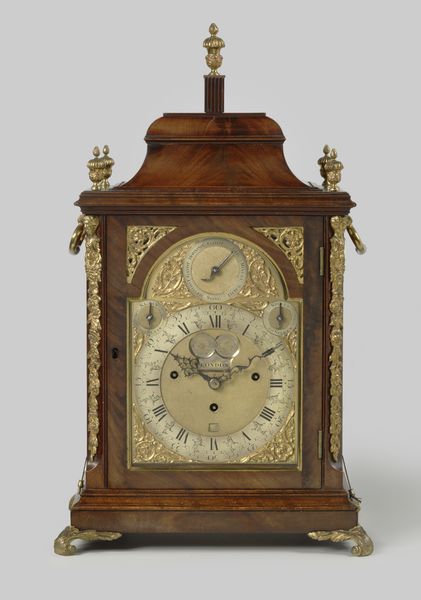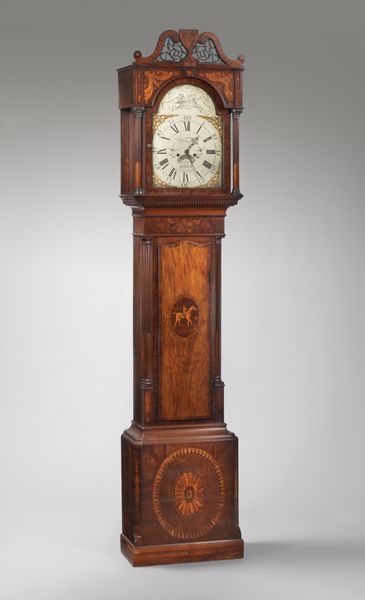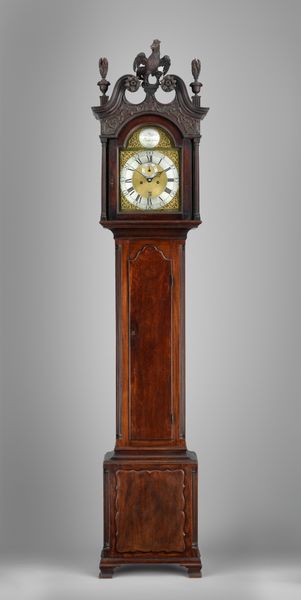
Dimensions: Overall: 122 1/2 × 27 × 16 in. (311.2 × 68.6 × 40.6 cm)
Copyright: Public Domain
Curator: Well, hello there. Today we're looking at a Longcase clock, dating from about 1769 to 1780. What immediately strikes you about it? Curator: The overwhelming sense of time and social power held within it. The clock's height demands respect and creates distance, doesn't it? Who had the space and resources for such an elaborate piece? Curator: Precisely. And consider the means of production – the wood carving, metal work, even architecture, are so intertwined. This wasn't simply mass production; this involved skilled craftspeople working meticulously. Each piece reflecting their understanding of complex techniques and perhaps even pushing the boundaries of material possibilities. Curator: That detail certainly speaks to issues of social hierarchy too. We're looking at not just a functional object but a potent symbol of wealth and authority in an era defined by inequality. Note the landscape details added on its surfaces - idyllic scenes in stark contrast with the social realities of its time, right? The presence of this clock speaks to an almost propagandistic narrative being carefully built. Curator: True. These landscapes and ornamental details also invite us to explore patterns of consumption. The availability and accessibility of different kinds of wood during that era – and the social status these embodied– would dictate which households could possess one like it. Each choice in the material used speaks volumes. Curator: And it’s not just the raw materials themselves. It's the labor extracted to harvest and shape them, right? To create the ornate carvings and assemble all the pieces required immense effort. A workforce operating largely invisibly to make these objects possible. Thinking about its physical creation also humanizes it for me - in some ways reminding me to critique it on my own terms and through our social context. Curator: Indeed, and by deconstructing objects like this Longcase clock, we see time itself through a material lens. It makes us appreciate not only the science of clockmaking but the historical context in which technology meets art. Curator: Ultimately, this ornate Longcase clock, on view at the Metropolitan Museum of Art, is more than just a time-telling instrument. It is a window onto a society structured by complex social, economic, and cultural forces – revealing as much about the present and future of power dynamics as the history it inhabits.
Comments
No comments
Be the first to comment and join the conversation on the ultimate creative platform.
